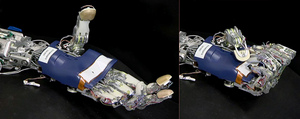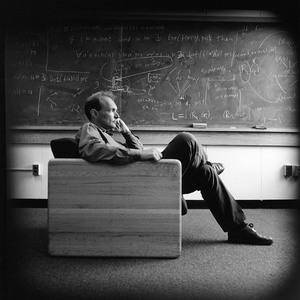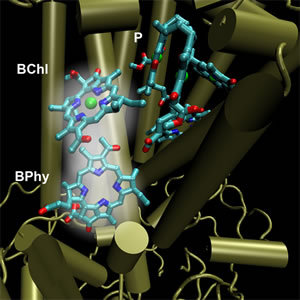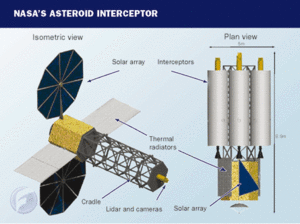For the first time, there is solid data to refute a popular theory that life came to Earth aboard a comet, Rutgers researchers say.
Deteriorated DNA from microbes, frozen for millions of years in the Antarctic ice, shows that organisms could not have survived the bombardment of cosmic radiation during deep space travel from outside the solar system, said Paul Falkowski, a Rutgers biologist and oceanographer.
We spend our lives on a spinning globe -- it takes only 24 hours to notice that, as night follows day and the cycle repeats. But what causes Earth to rotate on its axis?
The answer starts with the forces that formed our solar system.
A fledgling star gathers a disk of dust and gas around itself, said Kevin Luhman, an assistant professor of astronomy at Penn State. As things coalesce, the star's gravitational orbit sets that dust and gas to spinning. "Any clump that forms within that disk is going to naturally have some sort of rotation," Luhman said.
Europe's first early human colonizers were from Asia, not Africa, a new analysis of more than 5,000 ancient teeth suggests.
Researchers had traditionally assumed that Europe was settled in waves starting around two million years ago, as our ancient ancestors-collectively known as hominids-came over from Africa.
But the shapes of teeth from a number of hominid species suggest that arrivals from Asia played a greater role in colonizing Europe than hominids direct from Africa.
PHOENIX - Scientists have discovered the universe's largest known planet, a giant ball made of mostly hydrogen that is 20 times larger than Earth and circling a star 1,400 light-years away.
Michael Belfiore
Wired NewsTue, 07 Aug 2007 21:46 UTC
Jonathan Kuniholm's right arm terminates in a carbon-fiber sleeve trailing cables connected to a PC. He has no right hand, unless you count the virtual one on a display in front of him. The CG hand, programmed to look like silvery stainless steel, moves through a sequence of motions: spherical grasp, cylindrical grasp, thumb to forefinger -- all in response to signals from Kuniholm's muscles picked up by electrodes in the sleeve.

|
| © Johns Hopkins University Applied Physics Laboratory
|
| The device pictured above is the second prototype in the U.S. military's ambitious prosthetics project to build a bionic arm.
|
1991: The world wide web becomes publicly available on the internet for the first time.

|
| ©Corbis
|
| Tim Berners-Lee, an inventor of the internet, sits outside his office at the Massachusetts Institute of Technology in 2000.
|
Like the peeling of an onion, the secrets of photosynthesis are being revealed layer by layer. Early in 2007 a team of Berkeley Lab and UC Berkeley researchers identified quantum mechanical effects as the key to the astonishing ability of photosynthesis to utilize nearly all the photons absorbed by the leaves of green plants. Now a different team has found new evidence that points to a closely packed pigment-protein complex of the photosystem as the key to those quantum mechanical effects.

|
| ©Berkerley Labs
|
| In this depiction of a pigment-protein complex in a reaction center from the purple photosynthetic bacteria Rhodobacter sphaeroides, the white fog indicates quantum coherence between the excitations of two pigment molecules, accessory bateriochlorophyll (BChl) and bacteriopheophytin (Bphy), which promotes efficient energy transfer to the protein (P).
|
Kristen Philipkoski
WiredTue, 07 Aug 2007 16:58 UTC
On Friday Wired News
profiled a "lonely" former astronaut, Rusty Schweickart, who is leading a campaign to protect the earth from the possibility of an asteroid crashing into Earth and killing millions of people.
Turns out he wasn't so lonely. While we said in the Q&A that NASA was doing little to protect us from an asteroid crash, it turns out the agency's been working on an anti-asteroid nuclear missile.

|
| ©Flight
|
It looks like a big flashlight - but it's really a nonlethal weapon designed to make you sick.
Intelligent Optical Systems, Inc., of Torrance, Calif., has been granted a contract by the Department of Homeland Security to develop what it calls the "LED Incapacitator," according to a DHS online newsletter.

|
| ©DHS
|
Four galaxies are slamming into each other and kicking up billions of stars in one of the largest cosmic smash-ups ever observed.
The clashing galaxies, spotted by NASA's Spitzer Space Telescope, will eventually merge into a single, behemoth galaxy up to 10 times as massive as our own Milky Way. This rare sighting provides an unprecedented look at how the most massive galaxies in the universe form.
"Most of the galaxy mergers we already knew about are like compact cars crashing together," said Kenneth Rines of the Harvard-Smithsonian Center for Astrophysics, Cambridge, Mass. "What we have here is like four sand trucks smashing together, flinging sand everywhere." Rines is lead author of a new paper accepted for publication in Astrophysical Journal Letters.
Collisions, or mergers, between galaxies are common in the universe. Gravity causes some galaxies that are close together to tangle and ultimately unite over a period of millions of years. Though stars in merging galaxies are tossed around like sand, they have a lot of space between them and survive the ride. Our Milky Way galaxy will team up with the Andromeda galaxy in five billion years.


